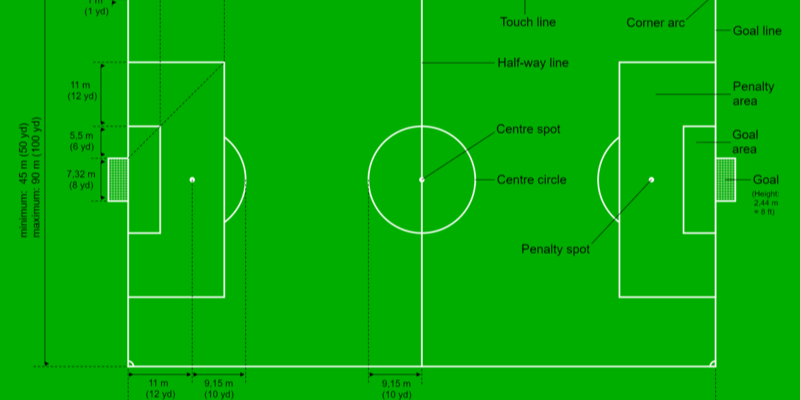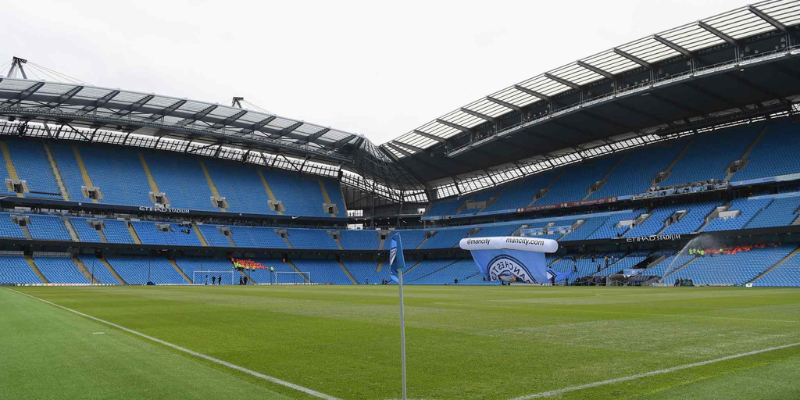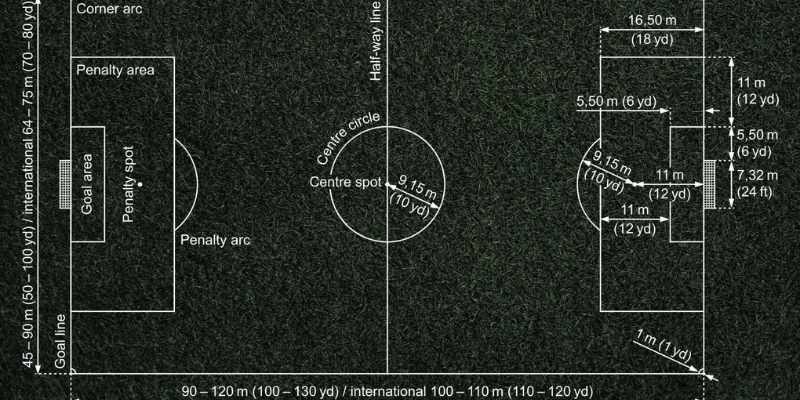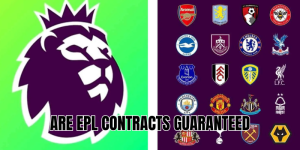In the Premier League, are EPL pitches the same size? The short answer: no. Most pitches in the English top-flight follow a standard guideline, but there are notable variations. In this article, HartGoal will walk you through what the rules allow, why differences exist, and what those differences look like across current EPL stadiums.
What’s the regulation size for football pitches

Every Premier League ground must follow rules set by IFAB and the FA. These rules don’t demand every pitch be exactly the same dimensions, but they do set minimums, maximums, and a regulated range.
- The length must typically fall between 100 yards (≈ 90 m) and 130 yards (≈ 120 m).
- The width must be between 50 yards (≈ 45 m) and 100 yards (≈ 90 m).
- For high-level leagues / competitions, a more specific “preferred size” is often used: 105 × 68 metres.
So, while the pitch at Old Trafford might be 105×68 m, another club’s ground might be slightly narrower or shorter but still legal. The rules give clubs leeway to adapt based on stadium design, history, and playing style.
Why are there variations in pitch size

There are several reasons why Premier League pitches differ:
- Stadium constraints and architecture
- Older, historical stadiums were built before modern “standard” sizes became common. Gaps, roadways, stands, terraces—these shape what is possible.
- Home advantage and playing style
- Clubs often tweak pitch size to suit their strategy. A team that relies on width and fast wings might prefer a wider pitch; a press-heavy or compact defensive side might favor a tighter playing surface to reduce exploitable space.
- Regulatory and maintenance issues
- Turf, climate, drainage, and maintenance budgets matter. Bigger pitches cost more to maintain. Also, league rules plus UEFA competition requirements push clubs toward more uniform sizes for certain matches.
- Upgrades and renovations
- When stadiums are renovated or new ones built, many clubs take the opportunity to adjust their pitch closer to ideal dimensions. Some end up aligning with the “standard” 105×68 m prescription.
How different are EPL pitch sizes in practice
Here are examples that show real variation among Premier League stadiums. These are current data.
- Many clubs use the standard size of 105m × 68m (≈ 115 yd × 74 yd). Arsenal’s Emirates, Manchester City’s Etihad, Villa Park among them.
- Nottingham Forest’s City Ground is one of the larger outliers: ~ 105m long × 71m wide, giving extra width.
- At the other end, Fulham’s Craven Cottage is one of the smallest Premier League pitches: ~ 100m × 65m.
- Others with smaller adjustments include Goodison Park, Selhurst Park, Anfield etc., where maybe the length or width is a few metres under the “ideal”.
These differences may sound minor, but at the elite level they can influence how a match plays out—the speed, spacing, pressing, physical demands change with every metre.
Does standardisation exist or is it trending

Yes – standardisation is trending, especially for newer, renovated, or UEFA-compliance stadiums. Some key observations:
- A number of grounds built or heavily renovated in recent years are designed with 105×68 m in mind. Consistency helps for TV coverage, broadcasting angles, maintaining turf quality, and athlete performance.
- When clubs change stadiums or upgrade major stands, there’s often a desire to hit closer to “ideal” dimensions.
- However, some old grounds with tight space, or urban constraints, find it difficult to expand width or length without massive cost or structural alteration.
Examples of pitch sizes across Premier League clubs
Here are selected stadiums and their approximate dimensions to illustrate the spread. These are not exhaustive, but give a useful cross-section.
- Arsenal (Emirates Stadium): 105 × 68 m
- Manchester City (Etihad): 105 × 68 m
- Fulham (Craven Cottage): ~ 100 × 65 m
- Nottingham Forest (City Ground): ~ 105 × 71 m
- Selhurst Park (Crystal Palace): ~ 101 × 68 m
These differences reflect how clubs maximize their natural home advantage or work with what’s available.
What difference do variations make in a match
Understanding that EPL pitches are not all the same size matters because differences influence:
- Tactical approach: Wider pitches allow more wing play, stretch of play, more running. Narrower pitches can favor compact defence and quicker transitions.
- Physical demands: More ground to cover means more stamina; tight fields can mean more bursts and directional changes.
- Game tempo: Larger pitches can slow down buildup because of the distance; smaller pitches can accelerate decisions.
- Set-plays: Corners, throw-ins, defensive shapes change depending on field width and depth.
Players and coaches often adapt depending on whether they’re at home or away (where the pitch can feel unfamiliar). Even small differences of a few metres can shift margins in tight games.
How “same size” vs “within range” work in EPL rules
To be clear: clubs aren’t required to have identical pitch dimensions, but they must stay within the regulatory range. For Premier League:
- IFAB’s Laws of the Game set general boundaries for field size.
- Premier League / FA may further specify preferred dimensions for broadcast, quality, and competition consistency—but still allow variations within those limits.
- For international matches or UEFA matches, stricter size standards may apply, sometimes requiring exact dimensions or tighter tolerances.
So “same size” more realistically means “within a standard norm” rather than exactly the same strip of grass everywhere.
Viewer perception vs reality
From your seat—or your sofa—most pitches will look similar. The grass, lines, stands, soundtrack, and stars behind the ball dominate what you see visually. But if you notice something different: perhaps wider wings, or more space behind full-backs in certain grounds, that’s likely the pitch size speaking.
Fans often don’t register small centimetre-level deviations, but players do (especially over a full 90 minutes).
Conclusion
When asking are EPL pitches the same size, the truth is: they’re very often close, but not exactly the same. They fall within regulated limits, many aiming for the ideal 105×68 metres, yet some are noticeably wider or narrower, shorter or longer.
HartGoal hopes you now understand why these differences exist, how they affect games, and which clubs are outliers. If you like, I can pull up the full current list of pitch sizes for all EPL stadiums 2025/26 season so you can see exactly how your favourite club measures up. Want that?






